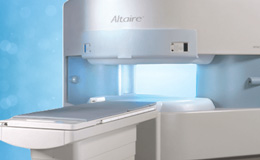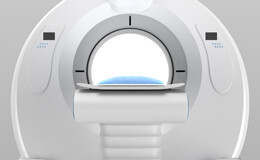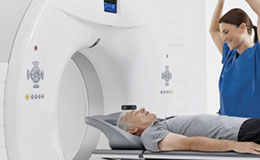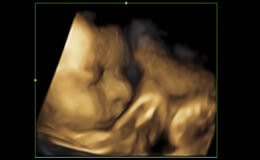
What is Bone Densitometry?
Bone Densitometry is a non-invasive means of measuring the density of bones. DEXA is widely used for the evaluation of osteoporosis. Bone density scanning measures the bone mineral density, which is related to bone mass. Decreased bone mass causes decreased bone strength and subsequent risk of fractures. Bone mass peaks in men and women at about age 30. Men are generally large and hence have a greater overall amount of bone mass. Both women and men experience a loss of bone mass of 3-5% per decade. Once women reach menopause, the rate of bone loss accelerates to 1% – 3% per year. This rate is slowed by hormone replacement.Fractures are the first clinical signs of osteoporosis. It is desirable to identify patients who have osteoporosis before development of fractures. People are considered at risk of developing osteoporosis based on certain risk factors and whether pre or post-menopausal.
How is the Exam Performed?
Bone density scans are non-invasive and painless. You will lay on a table while a scanner moves over the areas of concern. A computer then determines the bone mineral density based on the relative absorption of a detector on the other side of the bone. Generally, the lower spine (lumbar area) and the left hip are measured.
Should you get a Bone Density Test?
Bone density testing is recommended if you:
- Are a post-menopausal woman and not taking estrogen
- Have a personal or maternal history of hip fracture or smoking
- Are a post-menopausal woman who is tall (over 5 feet 7 inches) or thin (less than 125 pounds).
- Use medications that are known to cause bone loss. Ask your primary care physician for a list of medications.
- Have type 1 diabetes, liver disease, kidney disease or a family history of osteoporosis.
- Have high bone turnover, which shows up in the form of excessive collagen in urine sample.
- Have experienced a fracture after only mild trauma.
- Have had x-ray evidence of vertebral fracture or other signs of osteoporosis.
Exam Preparation
Do not take a calcium supplement within 24 hour prior to the examination. e.g. (Tums, Rolaids, calcium supplements or a multi-vitamin) Do not wear any metal buttons, buckles, or zippers.







